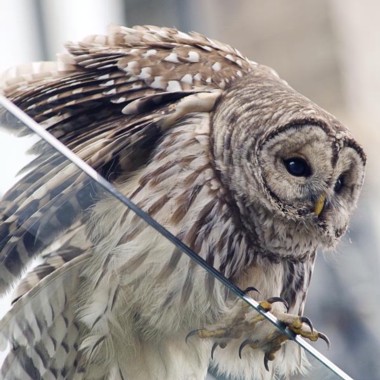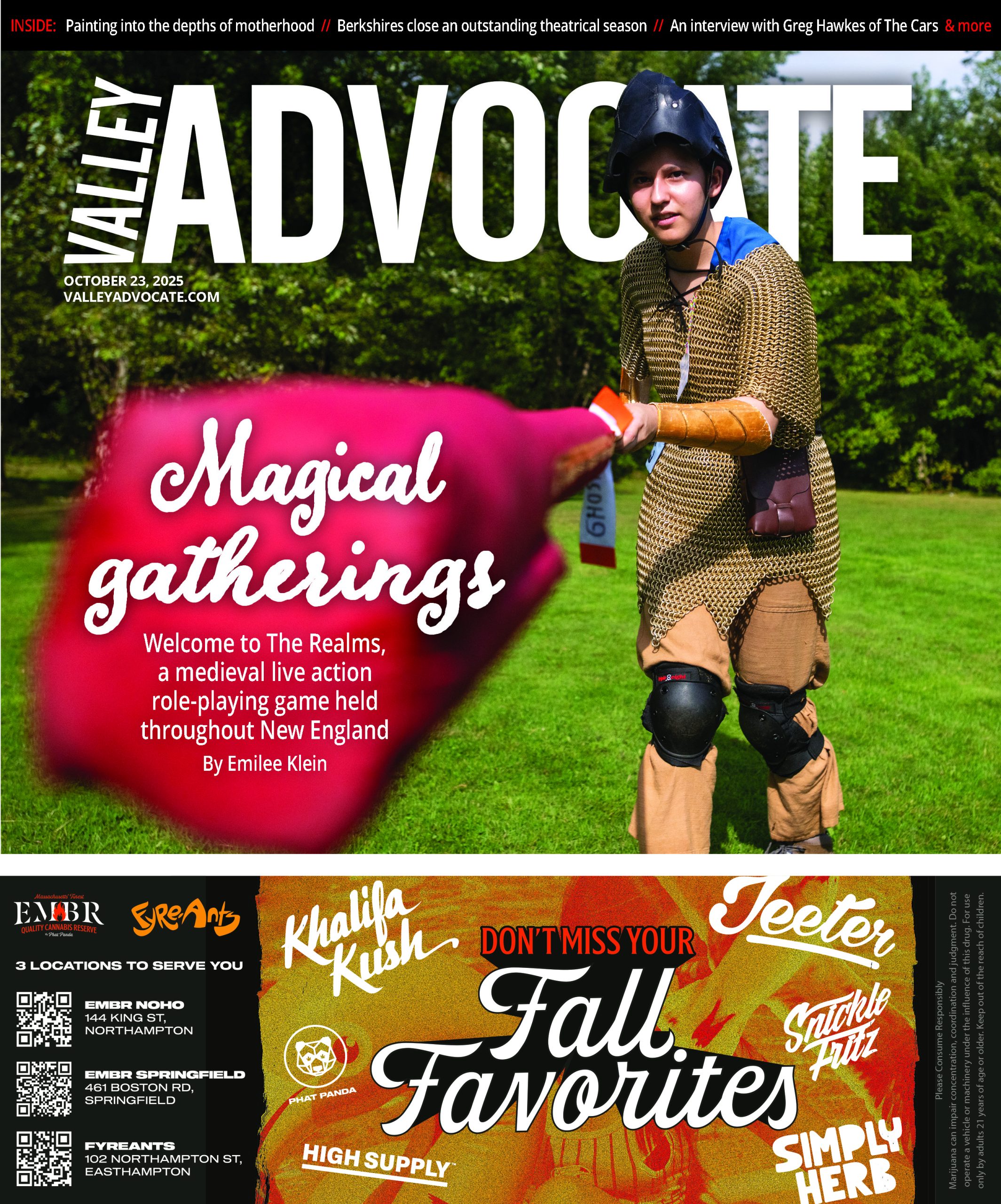Greg Saulmon walks past his pickup truck, and I follow. Down from the Route 116 bridge, back behind Levreault’s Garage and its big, barking, Rottweiler-looking dog, past the sound of an engine that gets louder and louder and louder until we can no longer talk with each other, let alone attempt to hear the shrill sounds of a sparrow, blue jay, or kestrel.
Behind the garage we make our way past a large, exposed cement pipe, slide down an embankment of slippery snow, pass by a chain link fence, and finally arrive at a plowed pathway that runs along the high cement levee wall, ladders and locks separating the half-torn-down factory buildings of the old Nonotuck Paper Mill from the half-frozen Connecticut River.
It’s a frigid, sunny, beautiful Saturday morning in downtown Holyoke. And we’re birding. Exploring this avian urban wilderness that Saulmon is so familiar with.
“It’s a landscape shaped by industry; a world of canals and factories and tenements,” he says of his home city. “It’s a world far removed from the pristine wilderness many birders seek, but it’s no less rich a realm for discovery.”
A series of Saulmon’s photographs is currently on exhibit at the Taber Gallery at Holyoke Community College, which will host an artist’s reception Feb. 19 at 5:30 p.m. The show, called The Birds Downtown: Urban Birding in Holyoke, Massachusetts, will be at the Taber through Feb. 27. Saulmon is the assistant online editor at The Republican.
“What do you see in a city?” Saulmon asks in his artist’s statement. “Before I began birding in downtown Holyoke, I assumed there were no falcons or owls or warblers here. It wasn’t a vision of the city that made sense. I was wrong.”
Where the cement wall gives way to a levee of earth, we climb the hill, and—standing in snow up to our shins—take in the surroundings. In the middle of the river is an island sprouting several trees where Saulmon says he’s seen bald eagles before. Farther up river, but not as far as the dam, is another spot the birds frequent. Down by the river’s edge, a blue jay jumps from branch to branch by its nest, while a woodpecker tests the durability of a tree not 20 yards away.
Snow-covered piles of wooden debris litter the land, and line the wide trailway on which we have been walking. Saulmon tells me that he once saw a gray fox back here. It moved itself about 20 feet away and watched him with curiosity, apparently in agreement that this spot is a good one from which to look for the unexpected.
From our vantage point, we can see all that is left of the mill buildings, land that was once considered appropriate for casino development, Saulmon notes. Back toward downtown, the spire of City Hall’s clock tower can still be seen, though the pair of red-tailed hawks we saw there a couple of hours ago are not visible.
“I think a lot about accessibility,” says Saulmon. And indeed, all of the spots we’ve toured this morning—from City Hall and Heritage State Park to the smokestack behind the headquarters of Girl, Inc. to the canals and the Route 116 bridge—aren’t more than a 15 minute walk from High Street in the heart of downtown Holyoke. “There are so many birds to see right here.”
We notice slight traces that appear to be feather marks in the snow: three or four similar spots, none with footsteps leading to or from them, apparent signs of avian activity.
When Saulmon talks about the birds he’s seen in Holyoke, he often mentions conversations with local people—whether they’re cops called to a scene, or high school kids hanging out—about the various types of birds they have seen. He tells me there isn’t really a community of self-identified birders in Holyoke, but there are many who take note of the city’s various aviary species.
Earlier that morning, as we were looking down the back alley of an apartment building at a tree branch on which was perched what appeared to be a cooper’s hawk, a man approached to ask if we owned the building. When Saulmon said we were birding, the man told us he had a red-tailed hawk in his back yard. The two of them began to trade stories of various sightings they had experienced, or heard about from others.
A block or two from the Cooper’s hawk perch is a building that has been raided by the FBI several times, Saulmon says—including in an incident in March, 2013 that he wrote about on his blog birdsdowntown.com: “Silver SUVS were parked in neat rows, doors left open, in front of and behind an apartment building notorious for drug activity. The operation inside was surprisingly quiet. There were occasional muffled shouts, and an occasional percussive bang.”
“Dawn broke,” continues Saulmon. “Somewhere in the neighborhood a rooster crowed. A state police detective, wearing a scruffy beard and a Kevlar vest over street clothes, told me, “I’ll be able to buy out of this building again in a week.””
We head back to Saulmon’s truck. A half hour later I am with friends, attending a birthday party at the Children’s Museum. The kids climb enthusiastically on the structure next to the big window overlooking the canal. I can’t stop watching the birds flying about outside.•



